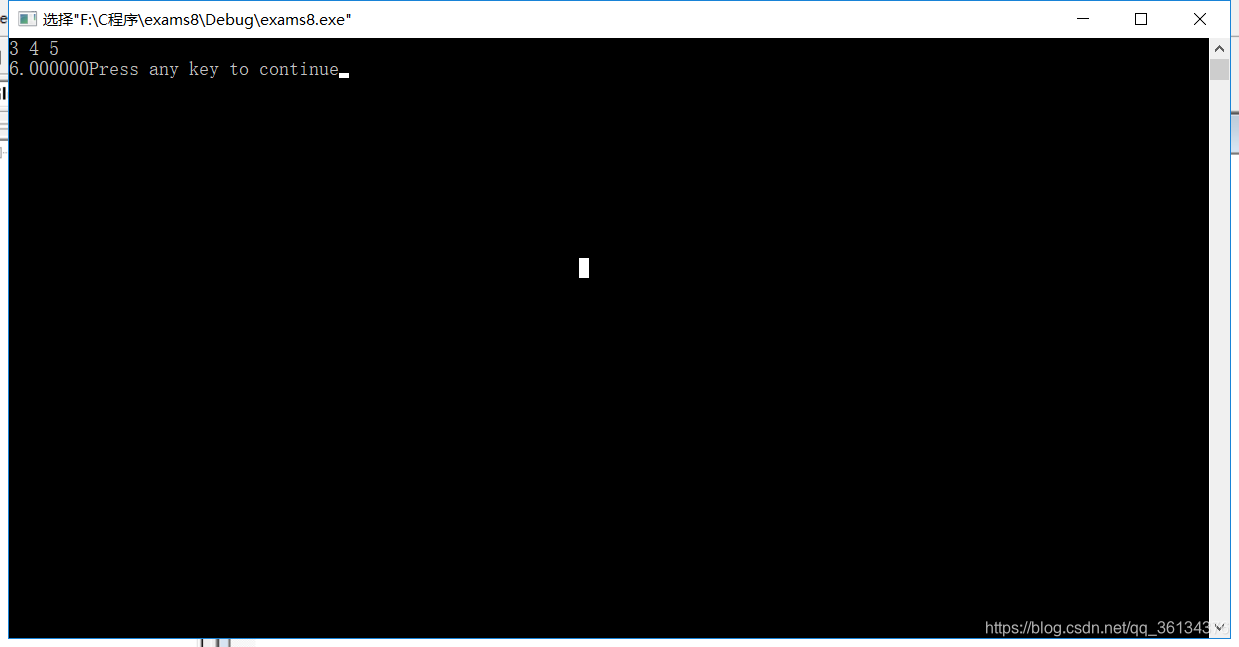C语言-求三角形面积
本文共 301 字,大约阅读时间需要 1 分钟。
一、代码
//三角形面积:(海伦公式)(p=(a+b+c)/2)//S=sqrt[p(p-a)(p-b)(p-c)]#include#include void main(){ double a,b,c; double p; double s; scanf("%lf%lf%lf",&a,&b,&c); if((a+b>c)&&(a+c>b)&&(b+c>a)){ p=(a+b+c)/2; s=sqrt(p*(p-a)*(p-b)*(p-c)); printf("%lf",s); } else printf("无法构成三角形"); }
二、结果

转载地址:http://xbch.baihongyu.com/
你可能感兴趣的文章
Node.js也分裂了-开源社区动态
查看>>
Node.js初体验
查看>>
Node.js升级工具n
查看>>
Node.js卸载超详细步骤(附图文讲解)
查看>>
Node.js卸载超详细步骤(附图文讲解)
查看>>
Node.js基于Express框架搭建一个简单的注册登录Web功能
查看>>
node.js学习之npm 入门 —8.《怎样创建,发布,升级你的npm,node模块》
查看>>
Node.js安装与配置指南:轻松启航您的JavaScript服务器之旅
查看>>
Node.js安装及环境配置之Windows篇
查看>>
Node.js安装和入门 - 2行代码让你能够启动一个Server
查看>>
node.js安装方法
查看>>
Node.js官网无法正常访问时安装NodeJS的方法
查看>>
node.js模块、包
查看>>
node.js模拟qq漂流瓶
查看>>
node.js的express框架用法(一)
查看>>
Node.js的交互式解释器(REPL)
查看>>
Node.js的循环与异步问题
查看>>
Node.js高级编程:用Javascript构建可伸缩应用(1)1.1 介绍和安装-安装Node
查看>>
nodejs + socket.io 同时使用http 和 https
查看>>
NodeJS @kubernetes/client-node连接到kubernetes集群的方法
查看>>